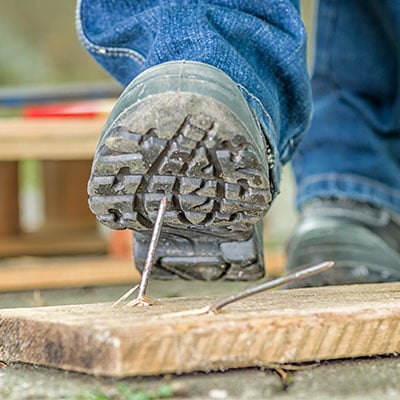Accident Prevention
What is Accident Prevention?
Accident prevention is an umbrella term that focuses on the activities, plans, and steps taken by an organization to reduce the risk of accidents, or in some cases, completely eliminate it.
Accident prevention encompasses all measures taken by an entity to reduce physical and mental injury, to save the lives of its employees, to mitigate the severity of an injury, and to reduce any damage to the environment and to the company’s assets.
 There are accidents waiting to happen in most workplaces. Are you working to reduce the risks?
There are accidents waiting to happen in most workplaces. Are you working to reduce the risks?
Develop a Stronger Safety Culture in the Workplace
Learn how to get everyone involved in safety at work with our FREE 8 step guide - 8 steps to ensure a safer workplace.
The Importance of Creating an Accident Prevention Plan
Accident prevention helps companies mitigate the risk of injuries in the workplace and identify any major hazards in the workplace. There are several reasons why it’s important to create an accident prevention plan.
Employee Safety and Wellbeing
It is the employer’s responsibility to ensure the safety and wellbeing of its employees. Companies are responsible for identifying all hazards in the workplace, ranking them in terms of severity, and then taking steps to mitigate or eliminate these hazards.
A properly designed accident prevention plan significantly reduces the risk of injury, illness, and death in the workplace, and ensures that employers are aware of any major risks that exist in the workplace.
Compliance
Employers are obligated until local, international, and industry-specific legislation to ensure employee safety. Failure to comply with safety legislation could result in serious fines and affect the company’s overall fiscal performance.
In extreme cases, the company may be prevented from conducting business or their licenses may be revoked as well.
Identify and Mitigate Risks in the Workplace
Creating a workplace accident prevention plan requires companies to first identify all the hazards in the workplace. Then, they must create plans to mitigate or eliminate these risks.
While creating the accident prevention plan, the company will conduct a thorough inspection to identify major hazards and then specify different steps taken to bring those hazards within acceptable limits.
Employee Training and Education
It’s also equally important for organizations to regularly hold training sessions and educate employees about the various steps taken to mitigate the risks.
Workplace hazards change constantly, which is why it’s important for companies to regularly hold training sessions and educate employees about various safety concerns.
From creating protocols to report accidents to guiding them about safe lifting practices, these training sessions are designed to ensure that all employees remain aware of how to prevent accidents, and how to act in case one occurs.
These training sessions also guide employees about the location of protective equipment, such as fire extinguishers, and to guide them about wearing safety gear before attempting dangerous tasks.
How to Create an Accident Prevention Plan
An accident prevention plan, also known as an accident prevention program, is a comprehensive plan that outlines all workplace hazards and includes activities and steps that employees must take in case of a safety event.
Here are the steps involved in creating an accident prevention plan:
1. Inspect and Identify Workplace Hazards
The first step is to inspect and identify hazards and risks in the workplace. A team of safety professionals is often tasked with conducting a thorough review of the environment, including the building, working practices, machinery, and any other hazards that may exist.
Usually, safety professionals rely on an ethnographic approach to simply observe employees at work and identify hazards. These hazards are then ranked in terms of severity, with ones posing the highest risk ranked at the top.
2. Create a Plan to Mitigate or Eliminate Hazards
Once all existing hazards have been identified, the next step is to identify activities or measures that can mitigate the risk these hazards pose. If they can be eliminated, steps should be taken to do so.
This is an important step and is usually completed in collaboration between the management and the frontline staff. All stakeholders contribute to the plan, as workers who actually operate the machinery have an acute understanding of the risks posed by certain hazards and how to mitigate them.
3. Implementing the Plan
Once all steps have been listed, the next step is to implement it. From installing first aid kits to removing unsafe machinery and replacing it with safer alternatives, all the steps must be carried out.
Then, another inspection is conducted to determine if the risks have been reduced sufficiently and are now manageable.
4. Training and Continuing Education
The accident prevention plan is a dynamic document and is regularly updated as new hazards are identified. It’s important for the organization to hold regular training sessions with employees.
Develop a Stronger Safety Culture in the Workplace
Learn how to get everyone involved in safety at work with our FREE 8 step guide - 8 steps to ensure a safer workplace.
Use EcoOnline to Prevent Accidents in the Workplace
EcoOnline’s Health & Safety Software makes it easy for companies to record hazards, identify risk mitigation steps, and standardize their approach to managing risk.
It allows organizations to capture and investigate incidents in the workplace, determine the root cause, and record observations.
